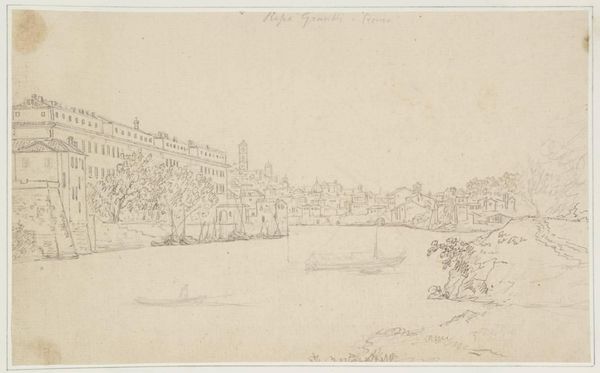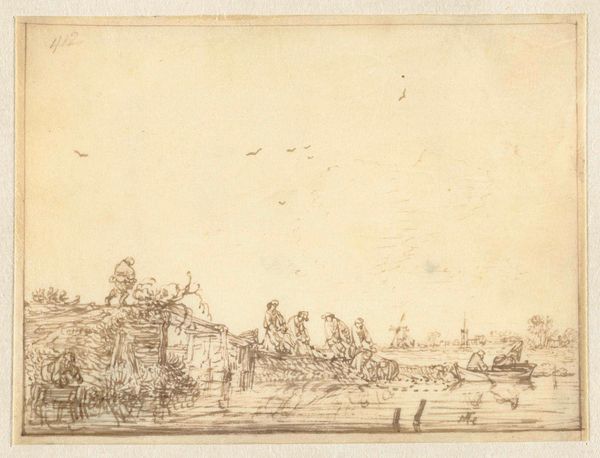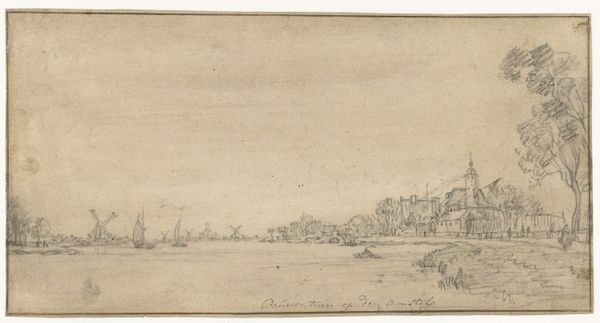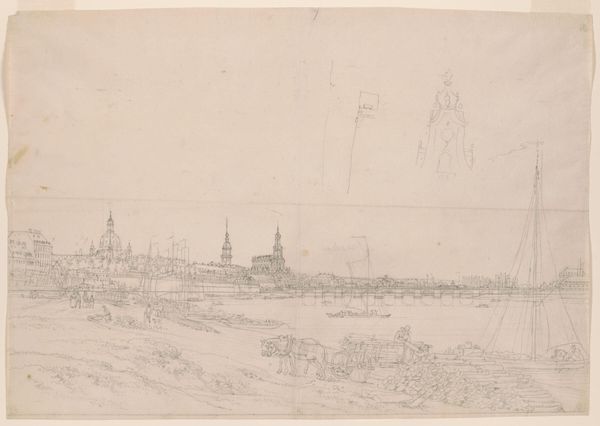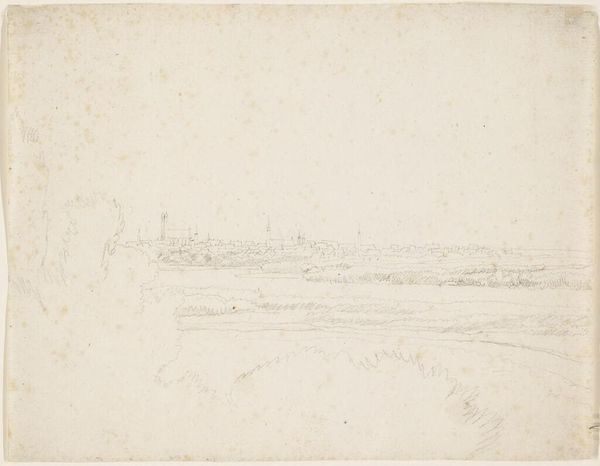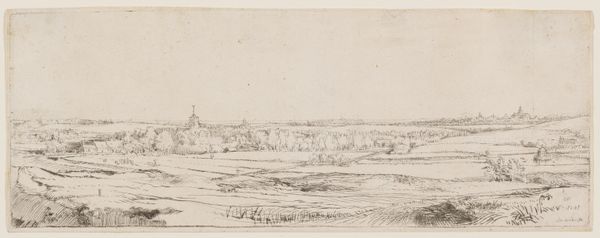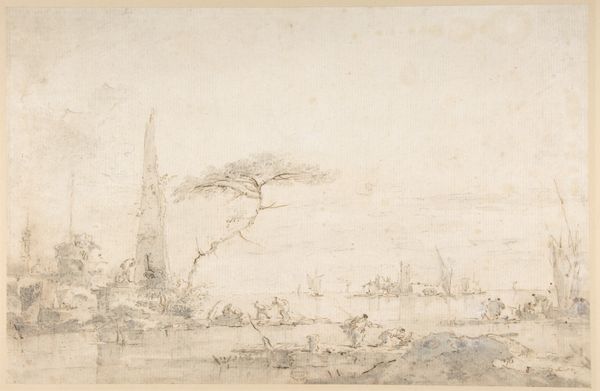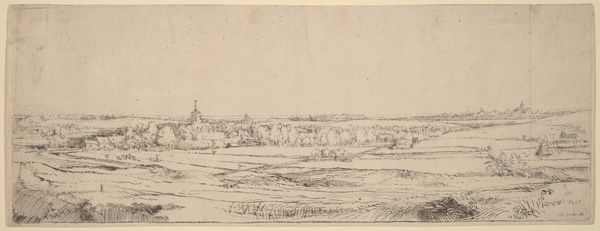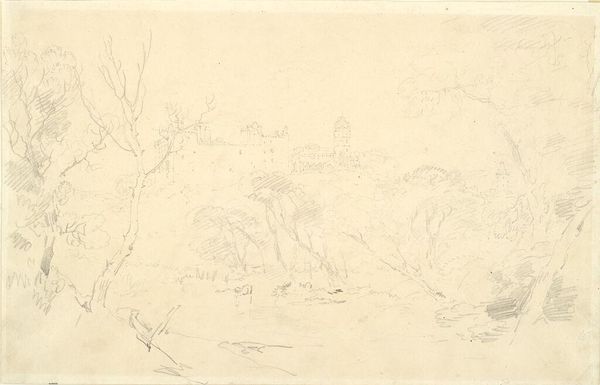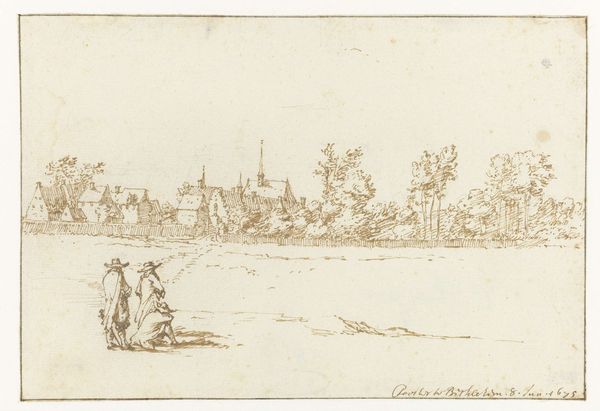
Dimensions: support: 237 x 327 mm
Copyright: CC-BY-NC-ND 4.0 DEED, Photo: Tate
Curator: Here we have William Marlow's delicate drawing, "Florence," from the late 18th century, held in the Tate Collections. Editor: It’s remarkably sparse. A skeletal city rendered in the faintest of lines hovers above the water, evoking a sense of calm observation. Curator: Marlow's technique relies on the subtle use of line to define form and space. Observe how he suggests depth with the barest strokes. Editor: And the materiality—the paper itself becomes part of the scene. The slight imperfections add to the feeling of immediacy, of being there in the moment of creation. One can almost feel the artist’s labor. Curator: Indeed, the composition leads the eye from the foreground detail of the bank, across the river, to the distant architecture, revealing a complex interplay between nature and culture. Editor: Ultimately, it's the unassuming quality of the materials and the artist's process that elevates it beyond a simple cityscape. Curator: A reminder that even the most seemingly simple image can reveal complex considerations of space and representation. Editor: Yes, a testament to how process and intention shape our perception.
